Issue Number 32, Spring 2016
Contents
- Mission Blue by Caroline Goodwin
- The Taste of Rivers by Devreaux Baker
- Cranes by Devreaux Baker
- A Coming Flood by Michael Lauchlan
- At the Collier County Rest Area by Andrew Hemmert
- Composting by Joyce Schmid
- Dead Cardinal by Kathleen Balma
- Helpless, 2015 by Maya Khosla
- June 1 Highway N by Robin Chapman
- Ninety-Three First Person by Alexandria Peary
- Not Stones but Rain by Laura Hanna
- Ode to the Sheep Crab by Sierra Jacob
- Oil and Water by Mark Trechock
- Poem in April (Walking My Name Back Home) by Mark Tredinnick
- Reiteration by Jesse Breite
- Sky Ghazal by Grace Marie Grafton
- The Fish Found in Her Dream by Charles Entrekin
- The Threshold by Florence Dacey
- The Flood That Saves the World by Richard Levine
- Every Day Is Earth Day by Martin H. Levinson
Archives: by Issue | by Author Name
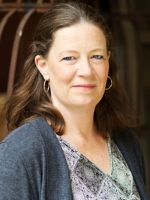
Mission Blue
(for San Bruno Mountain)
by Caroline Goodwin
Caroline lives and writes in Montara, California, in the San Francisco South Coastal Watershed, with her heart and imagination firmly planted in the Baranof-Chichagof Islands Watershed of Southeast Alaska.

I go up before sunrise, before the light
finds the promenade and salt flats
and marina, the baylands and lagoon
alive with willows and goldeneye
and before the door opens in the east
and the night shift clocks out
and the parents and older brothers and sisters
come home to the younger ones
to wake them and prepare the first
meal of the day, my own heart
opening into the familiar, into the old
grief blue as a glacier
I go up. And when the light reaches
the water at the center
of every lupine, when the blue wings come
like a blessing to cover my eyes,
there is my grandfather
leaving the garden, offering
bright lettuce and the formula
for a good crop -- one starfish under every
potato and a layer of herring eggs in March --
hand over his heart, hand
placing the last rose, the sun opening
over the bay, into the stonecrop,
into the blue wings we all hold onto there.
© Caroline Goodwin
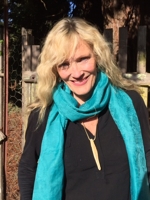
The Taste of Rivers
by Devreaux Baker
Devreaux lives on the coast of the Pacific Ocean in the Big River Watershed.

Open your mouth
I will pour the taste of rivers
into you
Navarro, Albion, Big River, Little Salmon Creek
The sand you taste
between your teeth
is the after-taste of river time
crossing and re-crossing paths
like lifelines you cradle
in the palms of your hands
The Albion tastes like moonlight
and cattails
The Navarro tastes like
wild sorrel and pine
Big River and Little Salmon Creek
taste like huckleberries eaten at dawn
If you fall asleep by the side of a river
you become part of the ebb and flow
from earth’s great aorta
and share the dreams of salmon
swimming home
through the blue-chambered heart
of this land.
© Devreaux Baker

Cranes
by Devreaux Baker
Devreaux lives on the coast of the Pacific Ocean in the Big River Watershed.

What if we could pull back
every lost opportunity
every loss becoming a white bird
we cradle in our bodies
so we become receptacles
of transformation.
Imagine a field
cranes returning
to nest
and we are the light
they are flying
into.
© Devreaux Baker
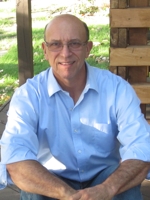
A Coming Flood
by Michael Lauchlan
Michael lives near the Lower Rouge River in the Great Lakes Watershed.

Where taxis growl and brownstones rise
from porch-stoops, where a quick girl
pockets her phone and crosses a street
angling for a train, waves will soon
lap over curbs. Salt will rot
what remains of mortar, stone, oak.
A few drenched scrappers will burn
what they can scrounge from stores,
apartments, from lives that once seemed
to matter. We know this as we know
the score of a game, the sound of lies,
the grip of a child’s hand. Now
and again a building will roar
and crumble, nudged by tide or storm,
and those below will be added
to what those alive must forget.
© Michael Lauchlan

At the Collier County Rest Area
by Andrew Hemmert
Andrew splits his time between the Big Muddy River watershed and the Middle St. Johns River watershed.

The arms of oaks and pond cypress reach over
a barbed wire fence. Wolfberry and catgut
cross into close-cut grass. Here at the border
between lawn and swamp, I want the bone-break sound
of twigs to announce more than dusk is with me.
I peer past the chain-links into the slate-green
shade of trees, hoping to catch last light
glinting off two eyes. I want something wild
in this place of picnic tables carved with hearts
and names, this place of flags dangling limp
on their poles like speared egrets, this place
of parking lots vacant except for the car
that brought me here. Before the highway
takes me back into itself, let me see
that something is alive, or let night pave
darkness over what tried to cross the road—
bodies of possums and raccoons blooming
on the shoulders, gators peeled open
like blown-out tires.
© Andrew Hemmert
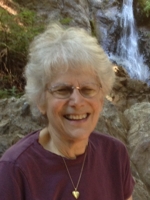
Composting
“Scientists agree that human beings can be composted.”
--Catrin Einhorn, New York Times, April 13, 2015
by Joyce Schmid
Joyce lives in walking distance of the San Francisco Bay (when she is feeling energetic).

Lay me on a bed of cedar chips.
According to the season, dress me up
in lilacs, roses, fuschias, or chrysanthemums.
Keep me warm with soft alfalfa hay
and then strew pine chips over.
When it’s time to plant, then come for me
and mix me into seeds and soil
so things can grow.
I will be leaves
converting sunlight into breath.
I will be flowers
asking hummingbirds to tea
and serving nectar to the bees.
© Joyce Schmid

Dead Cardinal
by Kathleen Balma
Kathleen lives at the mouth of the Mississippi on the Gulf Coast of the US.

Scarlet clouds against blue carpet:
half-circle of feathers on the floor,
as if the last act were a sweeping
of the wing. Nothing was ever this red.
I found him lying in the living room.
The round profile of his breast
made a treble clef of his body—
plumes legato; bird, whole rest.
Across the room the cat sang
a crying through closed mouth,
her aria of alarm (I barely heard her
solo. I was listening for a soaring.)
—the corpse eye stiff in openness
like new fruit in a tree blossom.
© Kathleen Balma

Helpless, 2015
"…an unusually high number of sea lions stranded since January,"
Justin Greenman, NOAA
by Maya Khosla
Maya lives near Copeland Creek, which is a part of the Russian River watershed in Sonoma County.

Hundreds beach, more slippery than puppies.
Black chains of thought tying the sea-drought
to their numbers. Tying their visible rib cages
to us. Arrival is a testimony to loss so great
it’s impossible to fathom with simple currencies
of air or blue salt. How the good sun becomes
underwater ribbons. How easy to mistake
the bands of light and dark for signs of hope.
Motherless hunger is the gravity binding
the pups. To themselves and sand.
As mammals to mammals, we offer warmth.
They are like any helpless human we have held.
Ours is an old story of borrowing, unable to return.
An ocean. Two. A globe. Now they come to us
in pods, eyes terrified by the act of begging.
For every hundred growing anchorless,
a hundred more, slipping beyond oblivion.
And we too are adrift, stray to ourselves
in new light. In new shooting stars of heat
streaking through ocean and ionosphere.
Out beyond the tide’s musculature, the parents
are grazing and grazing on empty sounds.
© Maya Khosla
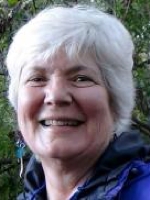
June 1 Highway N
by Robin Chapman
Robin lives in the Yahara Watershed and can canoe her way from there to, eventually, the Mississippi.

Dear Ones—behind us, the full moon rose
pewter in the rinsed navy blue; before us,
the setting sun spilled its orange arms
through the oaks, fading as we drove north
to a purple smear of cloud—and then,
faint sideways-visible flash before
we’re past, the fawn, standing at
highway’s edge in her moon-dappled coat;
what could she, so few days new
to the world, have thought as we sped past?
And I wished hard that whatever she saw
gave her pause to stay there, until
her mother called her back.
© Robin Chapman
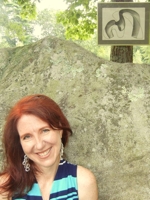
Ninety-Three First Person
by Alexandria Peary
Alexandria lives near the Merrimack Watershed in New Hampshire where there is an abundance of juvenile finfish.

She listens to the Awakened Mind System. She wears an expensive headset with soft leather cups for the ears to block the clatter from the dishwasher or the squabbling of two children. The headset was a Christmas gift from her husband. In the evening while he is tending the grill, she asks if he’s noticing the sound of the highway. They’d found the charcoal grill, a green kettle type, on the sidewalk with a cardboard “free” sign when they lived in the apartment. The back porch is more sun-soaked than ever because of the padding of trees her husband had removed between the house and the pond, between the pond and the highway. He says he hasn’t noticed the highway for days, not until she asked. She tells him that she notices it more now that she is writing an essay about the sound. He flips a piece of meat and tells her, well, then, stop writing that essay.
She finds the sound of the interstate to be a fine opera, a nuanced symphony. Its complexity far exceeds her ability to track it. “In the early 1880s Wilhelm Wundt conducted experiments to determine the duration of the present—that interval of time that can be experienced as an uninterrupted whole,” says Kerr in The Culture of Time and Space. Wundt “concluded that its maximum limit was about 5 seconds, and one of his students set it at 12…All these experiments provided new information for several philosophers who debated about the nature and duration of what we experience as ‘now.’” She compares herself to someone auditing a music appreciation course—eager yet easily distracted off the path of notes.
Do we have a choice in what we are aware of? Should we have a choice? These are the questions she asks herself as she looks out her studio window where the sounds don’t match up with the visuals.
Because they don’t —orbiting pair of male ducks, steam from melting pond ice, breeze tickling the ferns, all inconsistent with the combustion engines—she is reminded of the Magritte painting, “The Empire of Light,” where the time of day shown in the sky is out of sync with the one visible on the ground. She thinks of Zen master Suzuki, in your mind you created an idea of space separate from an actual time. But if she really looks outside her windows, she has to admit that many of the natural sounds in her yard come from invisible sources. How can she really tell that the chickadee hasn’t been piped in through hidden Boise speakers? The peepers in early spring are not a sound somehow sprayed from an aerosol can? Or in another moment of synesthesia, the sound of wind passing through upper pine boughs after a heavy snowstorm hung from a branch like a car air freshener?
If it’s rained, even the slightest of showers, the sound is thicker. As though a phrase has been emphasized in a handwritten letter.
The sound seems to change with the time of day, heaviness of traffic and the speed of the cars, the season, probably even the type of vehicles (contingent on time of day). She follows a gray strain for a few measures until it introduces a new sound like the yellow zipper of a Harley or the three-note of a big rig downshifting. In turn, this new part is sustained for a few moments until, like a contrail, it loses shape and fades.
It’s a Catch-22. If she discovers she hasn’t noticed the highway for a few days (the most she has gone is about four days), she feels relief, immediately followed by guilt for being so unaware. If she were more mindful, the highway would stripe her thoughts each hour at home.
On other days she listens to Brainwave Music Project, Gamma Meditation System, or Creative Mind System.
On most days I-93 is covered in the first person, ninety-three “I” of mostly single-occupant vehicles.
She pictures trinkets of faces inside cars. Baseball caps, cell phones, white, tan, brown hands which adjust stereo/AC/Heat, light cigarettes, drink from travel mugs and cups. She minces a shallot in the kitchen but feels the vertigo of looking down from a bridge at a speedway.
The huge windows, the decks, the house meant for entertaining, the view entirely of oaks and boulders arranged like in a sand garden and the seasons, the fireplace and the screened-in eating room. You’ll get used to it, say visitors to the new house, holding glass stems. After a while, you won’t even notice the sound. It won’t be part of your life.
This highway begins in Canton and ends in St. Johnsbury. It passes the backsides of many houses occupied by people from three different states. Of its 131 miles, two thirds pass through her state.
For others, the sound of a highway is a sensory deprivation the equivalent of a hotel room view onto concrete, a spent cigarette jammed into a diet soda can. For them, it’s the color of non-, this sound. It’s an odd and never an even sound. Always an exhale, never an inhale. It sounds like a question without a rise of pitch. Grammatically, it is permanently caught in the gear of the subjunctive.
Fact too that only bad occurrences dampen it (not holidays or days off) —the Boston Marathon bombing and city lockdown, or what it sounded like on the morning of 9/11. Though she did not live near the highway at the time, she remembers a neighbor in her building describing how on another highway everyone suddenly slowed down to 20 mph, heads tilted, listening. Not Christmas, not New Year’s or Thanksgiving, not even at 3 am—it might even be louder at 3 am. She floats in the canoe of her bed wondering about the lives of people who are driving at that hour, the three-step sound of a big rig gearing down.
The sound of the interstate is her prayer call to employment. Five days a week, she is separated from her family by 54 miles and 120 minutes at an average (excepting Friday afternoons) speed of 40 mph. She works between states: motherhood and family on one side, her profession on the other.
Before I-93 slunk underground, it was built as an elevated structure in Boston and was “greatly disliked by the citizens of the city because it cut the heart of the city in half.” After 1954, the interstate retreated underground but not before “cast[ing] long, dreary shadows” and acting as an “eyesore to the community.” It went on to become part of the Big Dig (1994-2006).
The whole situation is a koan. If she is one of the sound makers, a commuter, she does not hear the sound, but if she is standing in her kitchen, mincing shallots, she can most definitely hear it.
She listens to OM and Song of the Ecstatic, both from Master Charles Cannon.
When she and her husband had first seen the house, it was February, and all the windows were shut. Together they looked out the glass slider and saw a litter of vodka bottles and snuffed-out candles on the hardened snow around the jacuzzi and slatternly above-ground pool. They thought of the distressed lives of the sellers, some final frenetic fireworks set off for their foreclosing lives during a January bacchanalia. It was only when her husband had come back on his own and walked around the outside of the property that he had noticed the noise. They had saved their money for seven years by living in an apartment beside a busy main street in a place with a town oval and churches. If they opened their windows, soot from the exhaust turned the bedroom linens and especially the curtains dingy. They looked across at the space of the house and thought they could tolerate the highway. They had also seen houses with radon equipment in the basement, bad roofs, mold problems, and hastily-covered up water stains.
Searching for a sonic perfume, dye, or aerosol to cover up a noise is harder than an odor. For bad smells, there are fruity candles, college incense, bread baking in the oven. For wishing a sound in the environment to go away you need taller, faster growing oaks, faster growing technology, skinnier people biking to work, more Prius, more Volt, more Leaf. She noted the three scented candles lit in the upstairs bedrooms, the rooms which would go to their children. The candles were obvious compensations for pet cages—one varmint and one bird—and a later discovery, dog urine in the sunroom floor.
The streets in the neighborhood are named after the seasons, Seasons Lane, Autumn Lane, Summer, Snowflake. The houses are mostly earth-toned contemporaries designed with similar layouts and a yard plan that includes either oak trees or pines. The residents moved here because of convenience, good schools, safe neighborhood but mostly because they are commuters who live in one state but work in another. For the most part, they live here because of the proximity of the highway.
The irony is not lost on her that they had purchased the house from the owners of a struggling car dealership. She still spots the name of the dealership on the tailgates of vehicles which increasingly are becoming aging vehicles as the years pass, more “pre-owned” than “off-the-lot.”
She feels a constant low-grade outrage at the environmental damage. Along with the sound of the highway, this indignation hums around her days like a gray band around a plain room. She catches herself trying to transcend. This will be said to be one defining characteristic of our time: we were outraged as though we stood aside from it.
On a walk with her children, they came to the point in the cul de sac bisected by the shaded path which led to the power lines and a closer sound of the highway. The terrain had the look of land turned over to utility companies—double lanes of electricity poles in the extra fill, broken glass, and sand that supported scrub trees. A pine resembled a toothbrush and was actually a cell phone tower. They stepped closer until she could see the highway that was causing the noise in her house—a hole in the woods through which this other place was visible. They moved forward together, more like a group of cautious deer than the sort of people they’d seen who live on busy streets and set out lawn chairs to watch traffic.
Material borrowed from Stephen Kern's The Culture of Time and Space: 1880-1918 as well as I-93's entry on Wikipedia.
© Alexandria Peary

Not Stones but Rain
by Laura Hanna
Laura lives, writes, and drinks well water near the Alapaha River Shed.

You don’t want to begin working
until you study the bird
in the berry tree
feeding its young.
You notice your breath
fogging the window,
wonder what kind
of birds they are,
look up,
they’re gone.
Instruction
in the art of flight.
© Laura Hanna

Ode to the Sheep Crab
by Sierra Jacob
Sierra lives and writes beneath the lei of Haleakala, in the Kuiaha Gulch watershed.

Smooth as a harvested cowry shell, Half Moon
Bay is slick before the wind breaks. It is spring
and in shallows young sheep crabs decorate oval
carapaces with bryozoans, barnacles
bydroids. Some will be parasitic, host crabs
to be feminized: abdomens widen, wombs
grow for a brood pouch, their fighting claws fail to
develop. Mating males adorn knobby leg
joints, tubercles with thin films of swish algae.
They have already molted out of tight shells
carbonate exoskeletons trailing the
migration out of deep sea, backing from old
hard skin. Limp husks left and caught in gillnets
alongside thrashing angelfish and yellow tang
lassoed by their gills, teeth, and spines tangled in
mesh netting. Once hunted for savory flesh
arms will be cleaved off, the live crabs thrown
back and pulled in cool undercurrents.
Early morning beach walkers will swerve
around their hollow casing, cans, smooth
© Sierra Jacob
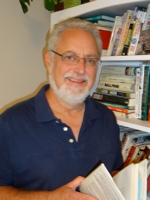
Oil and Water
by Mark Trechock
Mark lives about a mile north of the Heart River, which rises on the east slope of the North Dakota Badlands. After meandering about 180 miles it empties into the Missouri River, which has been dammed for hydro-electric power some 60 miles upstream. The Missouri receives virtually all surface water from the Bakken oilfield.

The oil came back in a dry year.
Gas flares sprang up in the weeds,
hugging the earth and thrashing like animals in traps.
We tried not to think about grass fires.
The second year was a year of oil and water.
Snowy egrets in flooded canola fields
stood still like ocean bathers getting used to the cold;
three children floated inner tubes down a ditch;
a bittern stood in the water upstream,
whipping the snake clenched in its beak from side to side
like a land man waving a standard lease to close the deal.
Waves lapped at the fence along a submerged gravel road,
white plastic bags rippling from the barbed wire
like flags of surrender awaiting an occupying force.
Things moved that were supposed to stay put.
Out of sight below ground with the dead generations
oil and briny water traversed the earth in tubes,
oil for market, water for disposal.
No one knows where it all goes.
If blueprints exist, they may possibly be discovered
on crumbling paper left at long-abandoned work benches,
perhaps by those who cannot decipher them.
The state says the oil and water move
below where anyone would sink a well—
yet maybe someone would,
living in a future year of no oil and no water.
But oil and water is what we have for now.
We know that much.
© Mark Trechock

Poem in April (Walking My Name Back Home)
by Mark Tredinnick
Mark lived for many years in the Blue Mountains, sandstone canyon country west of Sydney, Australia. After that he lived (and wrote many of these poems) in pastoral country on the banks of the Wingecarribee. In the last year or so he's lived in Newcastle, a steel city on a working harbour at the mouth of the Hunter, and just of late he's settled in Picton, a small town on the Wollondilly.
I set off walking south on the shoulders
Of these high cliffs, through kissing gates and over stiles, when summer
Was a crude suggestion yet among the broom and gorse.
The winter
That did not want to end was hedging
The heath, and the geology beneath it was heroic—its syntax
Tortured, its story lines long and unsettled by tides
And asides, its attitudes violent,
Its voicing portentous—and reading it was as difficult, the going as slowing, as Beowulf
In the ancient tongue. The promontory that shields
The town from the sky was stricken
With bracken and blighted with daffodils, and it stood as gaunt and lichened
And slant as a headstone in a churchyard. In my overcoat,
Which flapped and yawed
In the heartbroken wind, I felt like an eight-year old girl
Lost inside her mother’s dress. Below me, though, the sea was loosing
Perfect sets against the Secret Seven shore—Foxhole,
Raven’s Beak, Cleave Strand,
Hallett’s Shoot, Smugglers’ Run, Tremoutha Haven, Cambeak, The Northern Door,
The Strangles—and the wind kept up its perpetual complaint.
The birds—blue tits, wagtails, jackdaws in their jaunty
Rat-packs, choughs waking rough, magpies flying kites, a raven or two and everywhere
The plangent gulls—were telling fast the same story the rocks tell
Slow, and in between the sea,
Marbled exactly the same way the rock is strung with alabaster,
Peddled and piped and played like an organ in a chapel—Bach, Wesley, Handel,
Parry, and Harris’s “Flourish For an Occasion”—and this day was
Occasion enough. The wind, a faithful elder
Of the parish, long ago decrypted the flinty geomorphology of the shoreline and punched holes
Through High Church flanges and installed windows there
In the greater glory of the God. The farm buildings
And mills of the old dispensation, when I came among them, crouching in the lee,
Cradled in the stench of silage and the baked bread odour
Of ploughed fields, were as different
From the ground they stood on as a rock is from a stone, or land is
From landscape. The shingle roofs of Trevigue, for instance, ran a warp as wild
As the strangled strata of the scarp behind the strand
Beneath its feet. House torques
The same way home torques here, each dwelling the same telling as the stones. And I walked
My name down to its bones that day
In the glamour of the sunshine and in the clamour of the shade,
But I have no idea if what I felt as I closed in on my beginning again was the ecstasy
Of exhaustion, or arrival. My name lives here, but I do not. There’s a song
Going on as long as the sea, and I am the words
It’s forgotten. Home is the ground the distance sometimes makes up
On me. And crossing the bridge at the end of that homespun myth of an afternoon
Of the world, I startled a kingfisher dipping the skinny brook and she
Dropped her book and flew down-
River, stark in her sly grog blue and white togs, and her flight was a race the same shifting shape
As the tongue-twisting bed she’d been singing.

© Mark Tredinnick
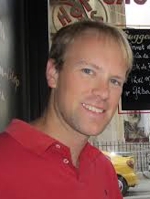
Reiteration
by Jesse Breite
Jesse lives where Peachtree Creek breaks off from the Chattahoochee. A few times a year, he drives down to Tybee Island, just outside Savannah, Georgia, to admire the coastal landscapes.

On a spring morning, I roost on a wood porch
with peeled paint-flecks
stuck to my bare feet and overlook the Atlantic coast.
Coffee articulates my veins
and sharpens my awareness of seagulls moving
circulatory in the coastal air.
Blown up a chute, each gull takes the breeze slow
and full in its breast
and wings with a machinic flap, easy-up to the volta
before plunging into streaks
between thing and thought, feather and fraught
like the careful rise of Icarus,
and yes, the tumbling, commonplace fall, but here, now,
this motion eloquently iterating.
No, not as fast as a falcon, not as keen as an angel, but
as clear and easy as any
human mind, body, soul mistaking over and over again:
This is likely to fail.
This is likely to be killed by something faster, stronger.
This is likely you—
your incredibly common, beautiful, and tragic story.
© Jesse Breite

Sky Ghazal
by Grace Marie Grafton
Grace lives in the wooded hills of Oakland, California, in the Sausal Creek watershed. Outside her kitchen door is a second growth redwood tree, part of a landscape that was blanketed with old-growth redwoods at the time of the California gold rush, and a short walk east from her house is the wilderness area of Redwood Regional Park, where she loves to hike.

If you begin with clouds in a spring sky
and you have nothing special to expect of sky.
Bend down, pick up a fallen twig covered with
lichen and moss, damp with rain from the sky.
Gray, green, white. On a back space of blue.
Simple day. Remember old tales of gods in the sky.
You have time. Arrows of light, arrows of rain.
Rumi's line about being specks of dust from the sky.
And if you follow roads that will, come summer,
pulverize to dust, through fields as uncommitted as sky.
Birds about their business, hawks on the search for
ignorant gophers, geese reaching their preferred water over sky.
Lie down in the field by the path, tiny spears of grass
still wet from the snows. You're waiting for the night sky.
What will you say when they ask where you've been, why
you weren't home for dinner? 'I was visiting with the sky.'
Pare down. Pare down. These days, too much to do.
Delineate grace. Impossible. It's wide as the sky.
© Grace Marie Grafton
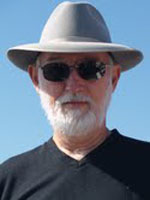
The Fish Found in Her Dream
by Charles Entrekin
Charles lives in the San Pablo Bay Watershed which is within the greater San Francisco Bay Watershed.

The bird, dark and mean, crosses the creek,
lands on the prow of an old boat.
Her feathers turn purple in the sun.
Her call falls like a stone.
I wish it were not so,
but this is how we meet.
When the bird calls, I always come.
I feel her dark joy congealing like blood,
her dreams changing my arms into wings.
I glide with her, alive.
I dive and devour
what shines beneath her in the stream.
But no sooner does she come
than she’s gone,
leaving the taste of her gift
dying in my throat.
I am left empty,
the place where she dreams.
© Charles Entrekin

The Threshold
by Florence Dacey
Florence lives in the Cannon River watershed in Northfield, Minnesota.

The whooping crane is an endangered species, brought back from near extinction by ingenious humans, but still in peril.
Over our subtle states of mind,
the fine print,
the whooping crane
hesitates,
one foot
poised.
A single crane
harbors
vast isolate valleys
under her wings,
rises like a rarified rig
from managed marshes
where blue crabs so far still feed
her royal mauve
feathers ruffling like
white sepulchers in fog.
And the prow,
the curve of that neck
graced by wind’s egress,
lap of water on shell and egg,
that head we calculate in
our paltry arithmetic:
Fifty nesting pairs
would be
enough, they say,
sufficient beaks and bones
stern eyes and
feathers enough,
to fly,
to bear us
over
the threshold.
Previously published in To Sing Along the Way: Minnesota Women Poets from Pre-Territorial Days to the Present, (New Rivers Press) and in Rock Worn by Water (Plain View Press)
© Florence Dacey
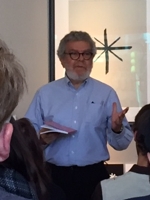
The Flood That Saves the World
What sort of science is it that enriches the understanding
but robs the imagination?
– Henry David Thoreau
by Richard Levine
Richard lives a few miles from the mouth of the Hudson River, which flows out through estuarial waters to the Atlantic. He lives even closer to Prospect Park, which contains one of the highest points in Brooklyn.

In April, rains reign; winter-knit ice melts.
For days, gray ranges glaciers across the sky,
their sustained dome over mountains helping
submerge the wood in brine-green light and dye.
Dark trunks, post and brindle the wet gloam,
like pier piles under green crowns and cloud tide.
Treasure’s buried everywhere in this loam,
the world’s composted rot, rich and alive,
so I wade in open to all signs shown.
Though I walk knowing that science has pried
open the metaphors and secret names
of air and magnetic orbits, whose tides
lure birds back a-wing and awaken game,
hibernating in boles, burrows and nesting,
stir sap, blood and seed the season’s one claim:
this is the flood that saves the world each spring,
that weds to primal reason unlike parts.
Here I find the ancient poems of living,
whose figured senses aloud were first art,
whose stanzas of wonder made sense of being.
Before methods and measures and pie-charts,
we were child-smart, trusting our sensing,
joy and fancy, figuring animals
from clouds and shepherds from wind herding
them. In morning mists, we saw pine spires tall
as ship masts and made harbors in the sky,
roiling seas from waving leaves, and through squalls
and gusts of as or like the storm’s calm eye.
© Richard Levine
Every Day Is Earth Day
by Martin H. Levinson
Martin grew up in New York City, whose geography is characterized by its coastal position at the meeting of the Hudson River and the Atlantic Ocean in a naturally sheltered harbor.

for seven billion human beings,
one to ten trillion trees, eight
point seven million species that
celebrate and suffer existence and
maybe a day at the beach with
Aunt Betty and her little red tote bag
packed with tuna fish sandwiches on ice
for a noontime lunch while gill-bearing
aquatic creatures seek provender of a
different sort, dolphins and porpoises
cavort lazily in the undulating waves, a
polar bear paddles in the Arctic Ocean to
find a stable ice floe, a camel naps,
perchance to dream, in the largest hot
desert in the world, a cockroach crawls
across a teak-stained hardwood floor in an
Amsterdam coffee shop as an Andean condor
scans the coast for carrion over Tierra del Fuego
and a Tasmanian devil eats a wounded wombat
hit by a car alongside a road in Australia. In the
Bay of Fundy a ferry founders killing all on board
but three hundred fifty three thousand babies come
into the world each day and the tides roll in and the
tides roll out and life goes on.
© Martin H. Levinson